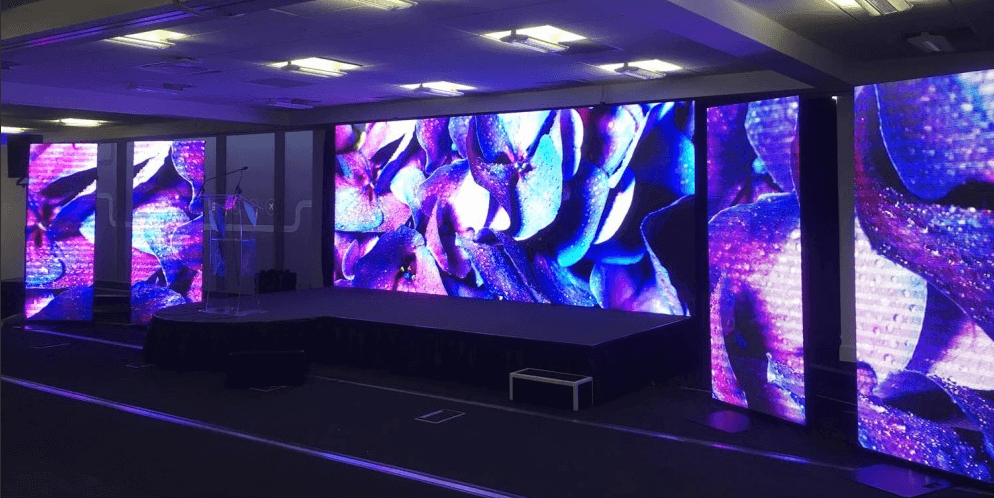Imagine a world where performances come alive with vibrant colors and dynamic visuals. This is the world of stage LED screens, a revolutionary technology transforming the face of live entertainment. From the evolution of stage lighting to its current prominence in modern performances, stage LED screens have become an integral part of the entertainment industry.
Understanding Stage LED Screens
A stage LED screen is more than just a backdrop; it’s a canvas for creativity. These screens are made up of light-emitting diodes (LEDs), offering stunning visuals and flexibility in design. There are various types of stage LED screens, each with unique features suitable for different performance environments.
Stage LED screens have become a pivotal technology in the world of entertainment, offering an unparalleled visual experience for various performances and events. Understanding these screens is crucial for appreciating their impact and versatility in the realm of stage design and audience engagement.
Definition and Basic Concepts
A stage LED screen is an assembly of light-emitting diodes (LEDs) in a matrix format. LEDs are semiconductor devices that emit light when an electric current passes through them. These screens are known for their brightness, clarity, and energy efficiency, making them ideal for use in a wide range of lighting conditions, from dimly lit theaters to bright outdoor environments.
The basic unit of a stage LED screen is the pixel, the smallest controllable element of the picture on the screen. Each pixel consists of LEDs, and the combination of these pixels forms the image or video displayed on the screen. The quality and clarity of the image depend on the density of these pixels, which is often referred to as the pixel pitch.
Types of Stage LED Screens
Stage LED screens come in various types to suit different settings and purposes:
- Indoor LED Screens: Designed specifically for indoor environments, these screens have a finer pixel pitch, offering higher-resolution images that are essential for close-up views. They are often used in theaters, concert halls, and conference centers.
- Outdoor LED Screens: Built to withstand various weather conditions, outdoor LED screens are robust and have a higher brightness level to be visible even in direct sunlight. They are commonly seen at outdoor festivals, sports events, and public gatherings.
- Flexible LED Screens: As the name suggests, these screens are flexible and can be molded into different shapes. They are used to create unique stage designs, offering creative flexibility to stage designers.
- Transparent LED Screens: These screens offer a see-through experience and are used when the visibility of the background is required. They are perfect for creating layered visual effects on stage.
Advantages of Stage LED Screens
Stage LED screens provide several advantages over traditional stage backdrops and projection systems:
- High Brightness and Contrast: LED screens offer superior brightness and contrast, making them visible even in well-lit environments and from long distances.
- Flexibility in Design: With the ability to display dynamic content, LED screens offer endless possibilities in stage design, transforming the ambiance of a performance.
- Energy Efficiency: LEDs consume less power compared to traditional lighting, making them a cost-effective and environmentally friendly option.
- Durability: LED screens are known for their long life and durability, which is crucial for regular use in various events.
- Seamless Image Display: With LED technology, the issue of shadows or uneven lighting is significantly reduced, ensuring a seamless visual experience.
The Technical Aspects
When considering a stage LED screen, two critical factors come into play: resolution and pixel pitch. These determine the clarity and detail of the images displayed. Additionally, the durability and flexibility of LED screens make them ideal for both indoor and outdoor settings.
Visual Impact on Performances
The use of LED screens in stage design significantly enhances the overall aesthetic of a performance. They create immersive environments that captivate audiences, making every seat the best seat in the house.
Comparative Analysis
Comparing stage LED screens to traditional stage lighting reveals a clear shift in preference. LED screens offer a more dynamic and versatile solution, though they require a higher initial investment. However, the cost-benefit analysis shows that LED screens are a worthwhile investment for any venue.
Innovative Uses in Different Settings
Stage LED screens are not just for theatres and concert halls. Their versatility makes them perfect for outdoor events, festivals, and more, creating memorable experiences for attendees.
Installation and Maintenance
Setting up a stage LED screen may seem daunting, but with the right expertise, it’s a straightforward process. Maintenance is also an important consideration to ensure the longevity and performance of the screen.
Case Studies
Numerous venues and events have successfully implemented stage LED screens, each with its unique challenges and triumphs. These case studies provide valuable insights into the practical application of this technology.
Future Trends
The future of stage LED screens is bright, with continuous technological advancements enhancing their capabilities. The industry is set to witness innovative trends that will further elevate live performances.
Conclusion
Stage LED screens have redefined the entertainment experience, blending technology with creativity. They are not just tools for visual enhancement but catalysts for transformative performances.
Also, Read more: Exploring the Latest Trends in Mobile App Development



